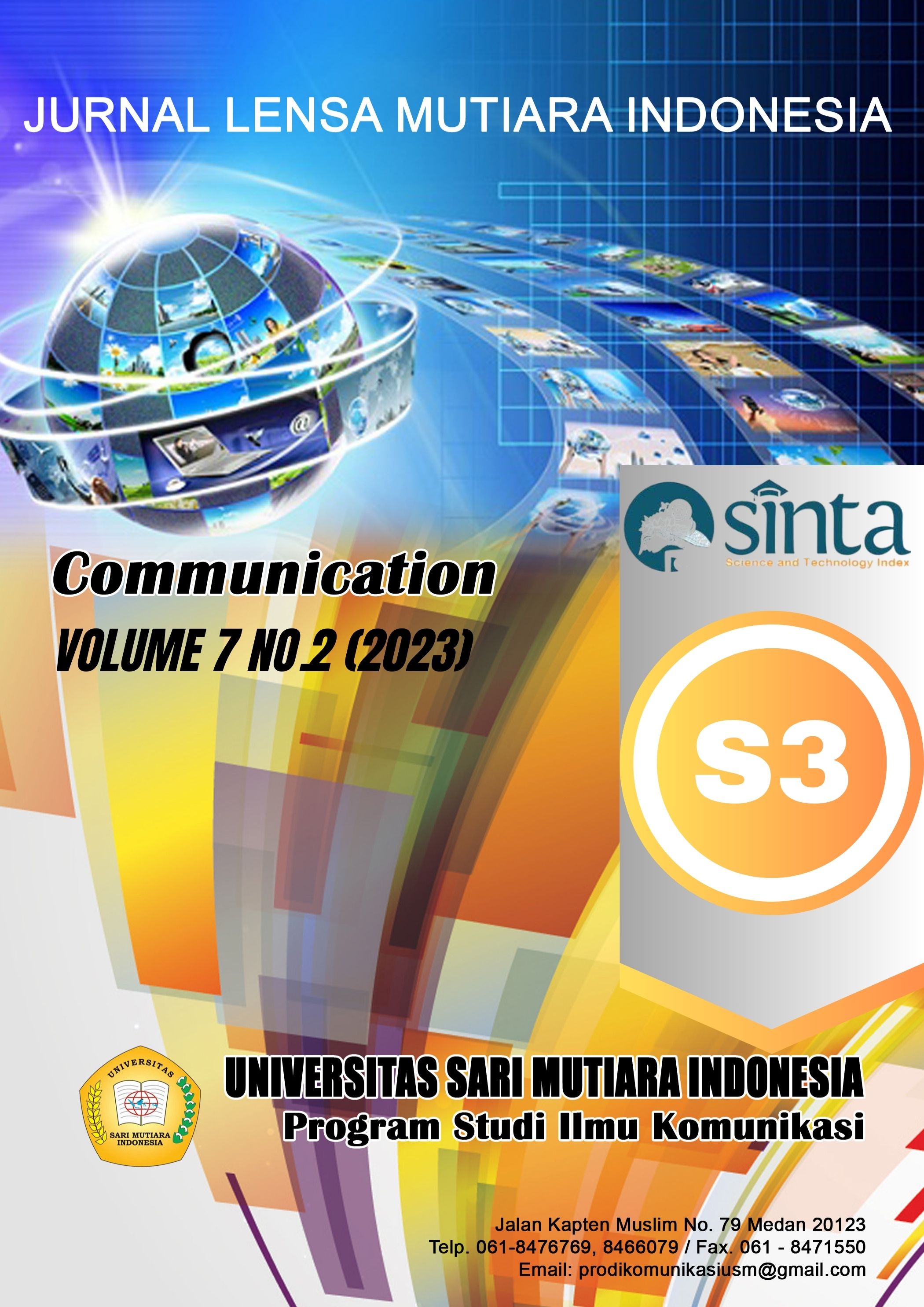Sexual Harassment Against Women on Social Media
Main Article Content
Abstract
In the current era of globalization, information and communication technology is developing rapidly, one of which is in the field of social media. But along with the rapid development of technology, there are parties who abuse the functions of Facebook social media. The current problem on Facebook is sexual harassment, where there are two parties communicating online and these two parties are the perpetrator and the victim. The perpetrator sent a short message on Facebook that was initially complimentary but became sexually suggestive. The aim of this research is to find out the underlying causes of sexual harassment and reduce the number of sexual harassment on Facebook. The method in this research uses a case study which is studied qualitatively by distributing an online questionnaire in the form of a Google form, then conducting interviews with several sources, namely two victims of sexual harassment. Data collection techniques used observations from newspapers and respondents from distributed online questionnaires and conducting structured interviews. The results of this research show that sexual harassment that occurs on social media is divided into written harassment, verbal harassment, visual harassment and real harassment. The response from female social media users was that most of them regretted the sexual harassment activities that occurred. Acts of sexual harassment also have negative impacts on victims, such as post-traumatic stress disorder (PTSD) and psychological impacts that trigger a series of complications, especially regarding the physical health of victims of sexual harassment on social media.
Downloads
Article Details

This work is licensed under a Creative Commons Attribution-NonCommercial-ShareAlike 4.0 International License.
References
Ahmad Fauzi, A Practical Guide to Mastering Facebook, (Surabaya: PT Indah Surabaya, 2009.
Andi and Madcoms, Friendly Friends Through Facebook, Yogyakarta: CV Andi Offiset, 2009.
Arivian, Philosophy with a Feminism Perspective. Women's Journal Foundation, 2003.
Elya Munfarida, Female Sexuality in Islam, Yin Yang: Journal of Islamic Studies, Gender & Children IAIN Purwokerto, 2010.
H.Moh.Roqib, Sex Education Sex Education in Early Childhood, Insania: Journal of Alternative Educational Thoughts, Purwokerto, 2008.
Imam Alvi and Umi Halwati, Factors of Blaming Victim (blaming the victim) in the Social Worker Practice Area, IAIN Salatiga, Islamic Management and Empowerment Journal, 2019, page 219.
Ismuadli Rahman Zarkasih, Catur Nugroho, MIKom. Sexual Harassment On Social Media. Journal of Communication and Business. Telkom University, 2019.
Khusnul Khotimah, Gender Discrimination Against Women in the Employment Sector, Yin Yang: Journal of Islamic Studies, Gender & Children IAIN Purwokerto, 2009.
Liliweri Alo, Understanding the role of Mass Communication in Society. Bandung . PT Citra Aditya Bakti, 1991.
Mohamed Chawki, Yassin el Shazly, Online Sexual Harassment Issues & Solutions. St. Mary's University, Texas, USA, 2013.
McQuail, Dennis, Mass Communication Theory. Jakarta: Salemba Humanika, 2011
Nasrallah, Rulli. Social media. Communication, Culture, and Sociotechnology Perspectives. Bandung: Symbiotic Rekatama Media, 2015.
Ninja Team, Facebook For Everyone, For All Affairs, Jakarta: PT Jasakom, 2009.
Romli Atmasasmita, Capita Selekta Criminal Law and Criminology, Mandar Maju, Bandung, 1995.
Sartika Kurniali, Step by Step Facebook, Jakarta: PT. Elek Media Komputindo, 2009.
Sulkhan Chakim, The Interconnectivity of Muslim Feminism and Renewal Movements in the Middle East, Yin Yang: Journal of Islamic Studies, Gender & Children IAIN Purwokerto, 2010.
Wahid, Abdul., Irfan, Muhammad (2011) Protection of Victims of Sexual Violence. Bandung: Refika Aditama
Yayan Sakti Suryandaru, Sexual Harassment through Mass Media. FISIP Communication Science Journal. Airlangga University. 2016
Yuke Yuliani Hamdani et al, Easy way to use Google forms in data analysis, Jakarta, 2017.
.
.
